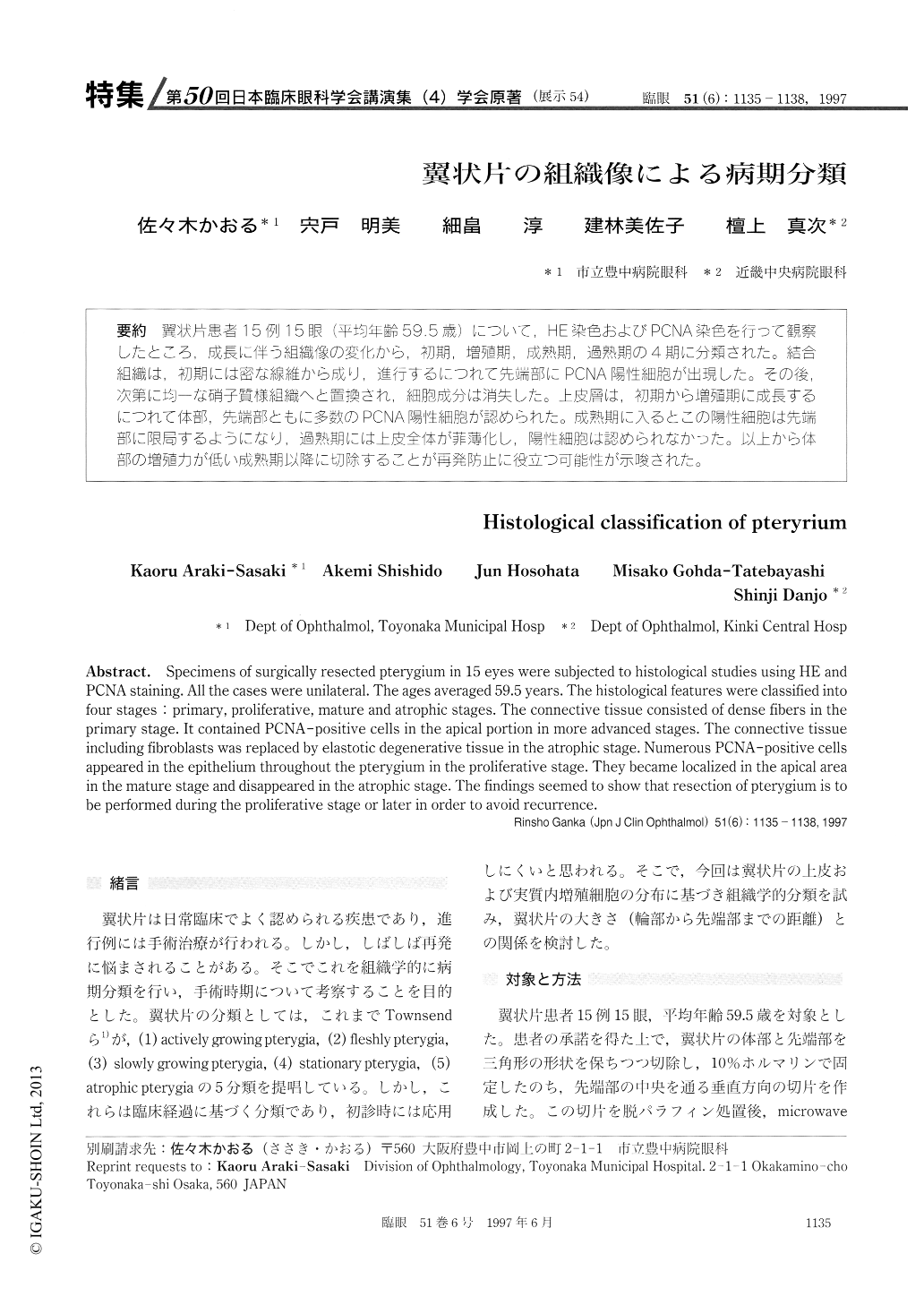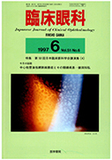Japanese
English
- 有料閲覧
- Abstract 文献概要
- 1ページ目 Look Inside
(展示54) 翼状片患者15例15眼(平均年齢59.5歳)について,HE染色およびPCNA染色を行って観察したところ,成長に伴う組織像の変化から,初期,増殖期,成熟期,過熟期の4期に分類された。結合組織は,初期には密な線維から成り,進行するにつれて先端部にPCNA陽性細胞が出現した。その後,次第に均一な硝子質様組織へと置換され,細胞成分は消失した。上皮層は,初期から増殖期に成長するにつれて体部,先端部ともに多数のPCNA陽性細胞が認められた。成熟期に入るとこの陽性細胞は先端部に限局ずるようになり,過熟期には上皮全体が菲薄化し,陽性細胞は認められなかった。以上から体部の増殖力が低い成熟期以降に切除することが再発防止に役立つ可能性が示唆された。
Specimens of surgically resected pterygium in 15 eyes were subjected to histological studies using HE and PCNA staining. All the cases were unilateral. The ages averaged 59.5 years. The histological features were classified into four stages : primary, proliferative, mature and atrophic stages. The connective tissue consisted of dense fibers in the primary stage. It contained PCNA-positive cells in the apical portion in more advanced stages. The connective tissue including fibroblasts was replaced by elastotic degenerative tissue in the atrophic stage. Numerous PCNA-positive cells appeared in the epithelium throughout the pterygium in the proliferative stage. They became localized in the apical area in the mature stage and disappeared in the atrophic stage. The findings seemed to show that resection of pterygium is to be performed during the proliferative stage or later in order to avoid recurrence.

Copyright © 1997, Igaku-Shoin Ltd. All rights reserved.


